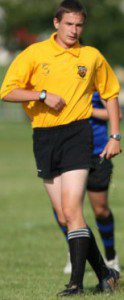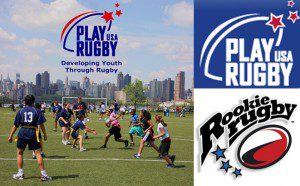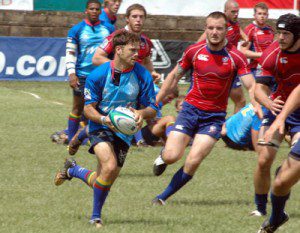
Cody Kuxmann is a Referee at the London Society Of Rugby Football Union Referees, while studying International Relations at Richmond, The American International University in London. He lives in Richmond Upon Thames but hails from Green Bay, Wisconsin.
Athens Airport – I’ve decided to write a three part series on the development of rugby at the Youth, Senior, and onto the Professional level with in the United States. Why, because I want to and feel that this is an area that has been very touch and go in the past with USA Rugby. At the moment it looks like they are moving in the right direction to make the game much better with in the US of A.
USA Rugby has done a lot in the past few years to promote the youth game. Play Rugby USA has done an incredible job and Rookie Rugby, which recently won the IRB’s Development Award, is also front and center.  This program is a non-contact version of rugby used to promote younger youth to play. Through there use of a non-contact version, they are able to actively promote a game played by both genders, and also proper handling. The game is based around the passing the ball, with no kicking, line-outs or mauls. It is a wonderful development within the youth game.
This program is a non-contact version of rugby used to promote younger youth to play. Through there use of a non-contact version, they are able to actively promote a game played by both genders, and also proper handling. The game is based around the passing the ball, with no kicking, line-outs or mauls. It is a wonderful development within the youth game.
Does it work, though? After speaking to Andrew Mase, former Youth Program Manager with Minnesota Youth Rugby, and former Cal player, he discussed the inclusion of Rookie Rugby within the development of the game in Minnesota. Guess what. The game in Minnesota has exploded. They had a 15 percent increase in players and the addition of 7 more middle and high school teams. Whether this is a direct link is debatable.
Personally, I think the way to develop the game is to go the 7s route. With the inclusion of Rugby in the Olympics, why not use it as a leverage factor to develop the game. Reasons to do this are simple: A full 15s team requires at least 35 players to have a good supporting system, where as you can easily run a 7s team with as little as 12. Also, the ability to run a completely new team takes at least 20 dedicated players. A player base that some schools simply cannot produce.
 This concept works especially well in areas like Iowa, where they have very small player pools. When looking at Iowa, one major thing stands out; the average school size is around 400 students. Assuming that half the students are female, that leaves 200 students to form a team. Getting 12 of those students out to play is much easier than coming up with 20. Iowa has also re-branded the 7s game as Olympic Rugby, using the hype to generate participation. With the help of this hype, Iowa High School Rugby grew from just 24 players at the start of 2010, to 243 in 2011… more than a 1000% increase.
This concept works especially well in areas like Iowa, where they have very small player pools. When looking at Iowa, one major thing stands out; the average school size is around 400 students. Assuming that half the students are female, that leaves 200 students to form a team. Getting 12 of those students out to play is much easier than coming up with 20. Iowa has also re-branded the 7s game as Olympic Rugby, using the hype to generate participation. With the help of this hype, Iowa High School Rugby grew from just 24 players at the start of 2010, to 243 in 2011… more than a 1000% increase.
At the moment, 7s rugby seems like the best way to go for developing the game in America. It allows for teams to grow, maintain a player base and compete despite not having a huge player pool.
I don’t see how we can not use 7s as a resource for growing youth rugby in America… What are your thoughts?

